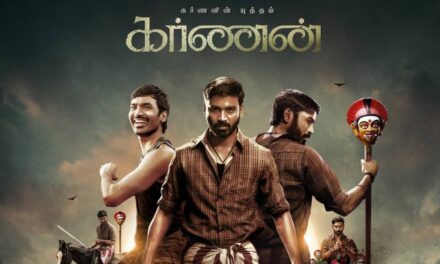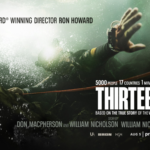Director: Shankar
Cast: Rajinikanth, Akshay Kumar, Amy Jackson
‘The public has an appetite for anything about imagination – anything that is as far away from reality as is creatively possible.’-Steven Spielberg
It’s safe to say that 2.0 has been the most anticipated film of this decade. Built up as a sequel to the film Enthiran (2010), Shankar brings together new faces as part of the cast to co-star with Rajinikanth while retaining the core theme and timelines of the first film. Bankrolled by Lyca Productions, this is touted to be the most expensive film made in India till date. Who better than Shankar to trust such an extravaganza with? Coming off the back of a timid flick in ‘I’ by his standards, Shankar has invested a good four years in molding and shaping his pet project.
Vaseegaran (Rajinikanth), the brain behind the creation of Chitti the robot (also played by Rajinikanth) is continuing his research into humanoids and robots a few years (seemingly) after the events of the first film. Though there is still an embargo on Chitti by the Government, Vaseegaran has now developed a new robot Nila (Amy Jackson) who performs the duties of his lab assistant. Danger starts looming when suddenly and inexplicably, mobile phones start vanishing from everywhere in the city of Chennai. Phones actually fly out of people’s hands and from shelves in shops as if being summoned by a mysterious force. Things get murkier as the rogue phones now seem to be on a killing spree and Vaseegaran is asked to re-assemble Chitti to try and counter this mysterious evil and save the city. On investigating, this all turns out to be the handiwork of Pakshi Rajan (Akshay Kumar), an ornithologist and activist. Pakshi has a back story that is depicted in a fifteen minute flashback just after the interval where we see the seeds of his motives sown. This sets up the second half nicely for a thrilling climax where Pakshi and his winged monster take on various versions of Chitti (including an unexpected surprise) in a bombastic battle!
To borrow a famous quote from Rahul Dravid on Sourav Ganguly (and also take the liberty to re-word it): When it comes to imaginative visualization, first there is God and then there is Shankar! In India at least, most definitely. Though the concept of technology as an evil is not novel by any stretch, Shankar’s ingenuity in sculpting his frames sets this film apart. There is no boring or dull moment. The scenes at the start of the film where we see the rogue phones committing heinous murders are not just chilling but simply stunning to watch. The film is shot in native 3D- that is, the scenes have been shot originally using 3D cameras itself and not converted to 3D during post production. This is rare even in Hollywood and demands great technical skill (provided in abundance by the brilliant cinematographer Nirav Shah) and also a sizeable budget. Shankar is vindicated in his choices though as the visual end product is mesmerizing beyond anything seen in Indian cinema till date. Nothing is lost in translation from the bound script to the silver screen and for a movie like 2.0 with VFX as it’s backbone, Shankar’s contrivance in this regard is to be lauded.
Rajinikanth carries the film on his shoulders with his charismatic portrayal of Vaseegaran, as well as various versions of Chitti. Amy Jackson puts in the best performance of her career so far and her character delights especially in the way it provides comic relief by quoting various Tamil pop culture references from time to time! It won’t be a surprise if the scale of this film makes a few heads in Hollywood turn their attention towards her obvious talent. Akshay Kumar however steals the show with his magnificent portrayal of Pakshi Rajan, both in his monstrous form as well as in the flashback sequence. The dialogues are crisp and memorable and a lot of credit has to go to writer Jeyamohan for this. There are no full-fledged songs in the film itself though AR Rahman’s score is catchy and does it’s job. The only drawback of the film is a sequence involving Dhirendra Bohra (Sudhanshu Pandey), the son of the villainous Professor Bohra from the first film. This sequence seems to lack in logic to an extent and could have certainly been written with more thought as it appears at a crucial stage in the film and is a major plot point. Shankar also dabbles with certain concepts in the film that are superlative and seemingly beyond the boundaries of science as things stand today. It would have been good to maybe expend more time on explaining these concepts a little bit more in detail, from his perspective at least.
In summary, 2.0 is undoubtedly a landmark film, just like it’s predecessor Enthiran was eight years ago. Apart from the film’s technical brilliance, it is important to not forget the pertinent message it carries. Technology should not be allowed to become the environment’s enemy. It is still not too late. And if it becomes so, even Chitti (or his advanced versions) might not be able save the day!
Overall rating: 3/5







